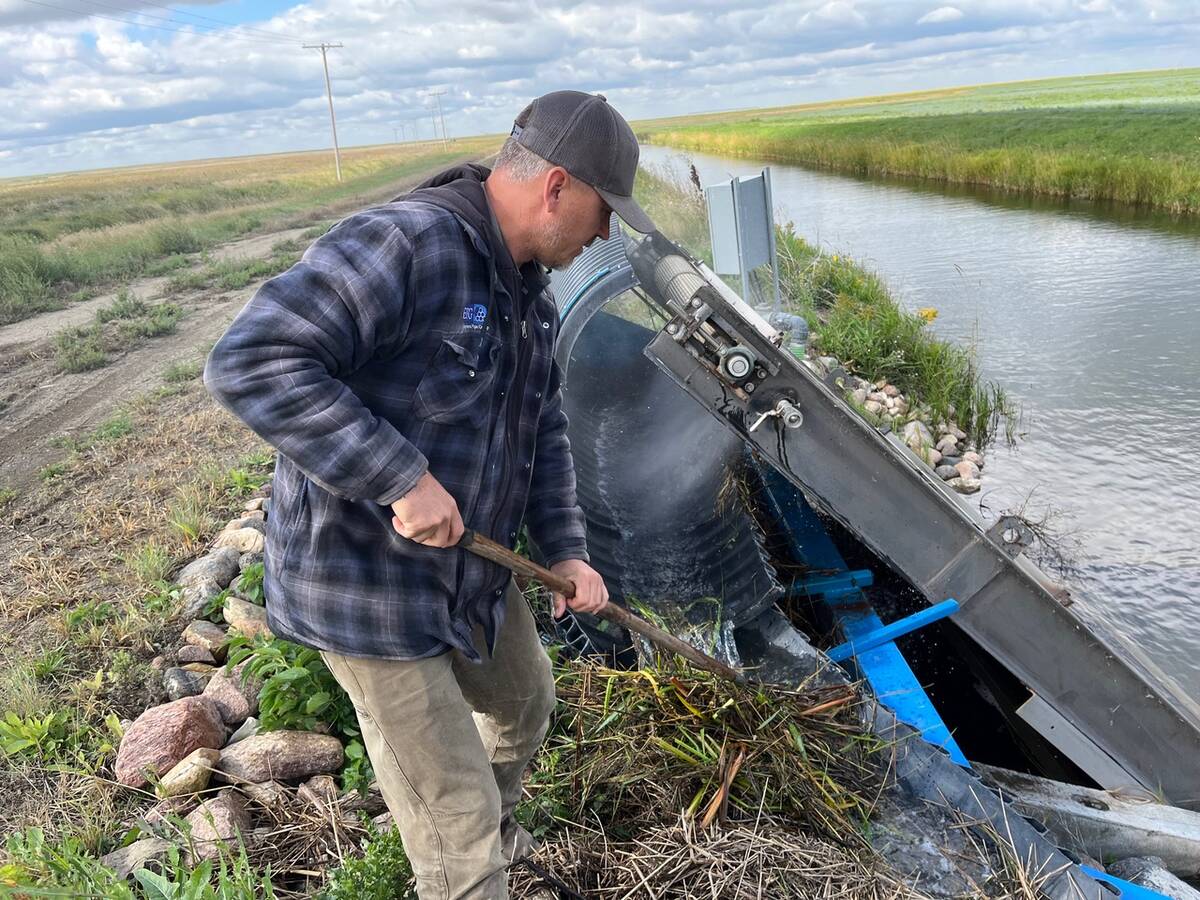Spring runoff has been more like a trickle this year in large portions of Saskatchewan and Alberta.
Recharging of surface water supply is below normal to much below normal in those two provinces, according to the Prairie Farm Rehabilitation Administration. Most of Manitoba’s grain belt is near normal or above normal.
Gerald Maser farms in one of the below average areas. While there was little runoff on his ranch near Manyberries, Alta., it’s better than it has been in recent memory.
“There was about two years here we never had any runoff, so we’re still pretty happy with what we’ve got.”
Read Also

Saskatchewan farmer uses tile drainage to manage water
The integration of both irrigation and tile drainage results in higher yields, water efficiency, improved soils and less nutrient runoff, says one producer.
The water outlook varies from farm to farm. Some dams in the surrounding area are full; others received no moisture this spring. One constant is that the natural sloughs are all “pretty much dried up.”
Maser said the water shortage is just like the BSE situation – producers have to find a way to manage through it. That might mean selling cattle or moving them to areas where there is water.
Doug Johnson, director of basin operations with the Saskatchewan Watershed Authority, said the situation is grim in the southeastern and central portions of the province.
“Some guys are going to have to work at getting a water supply on farm. If they’ve got dugouts they’re going to have to pump into them.”
But it is a “surmountable” problem that is not as bad as years gone by. The authority had about 1,200 rentals of pumping equipment in each of 2001 and 2002. This year it is anticipating about 500 jobs.
Preparing for the worst
Saskatchewan Stock Growers Association second vice-president Dennis Fuglerud said farmers are getting used to adapting to dry conditions by doing things like digging extra dugouts or wells.
“I think most producers probably have a better drought management strategy in place now than we did four or five years ago.”
Fuglerud’s cattle operation near Broderick, Sask., doesn’t rely on runoff water because it is situated on sandy soil where dugouts don’t work well. Like many other cattle producers, he is more concerned about poor soil moisture conditions than full reservoirs.
“The drought and the lack of moisture for grass growth are going to be just as critical or more critical than the shortage of runoff.”
This is the fourth year of below average snowfall and rainfall in his region, so he has a backup plan in case of dismal pasture conditions.
“If we don’t get any rain in the next few weeks we’ll probably graze some of our fall-seeded grain crops like fall rye.”
Fuglerud still hopes he will be able to keep those crops until the fall when they will be harvested for winter feed or sold as grain.
“It’s not too late to see a turnaround. If we get some good rains in the next two to three weeks the grass growth could come pretty good. But as of right now, it doesn’t look real promising.”
Maser also is optimistic.
“Everybody is crying and whining here, but all it takes is one good snowstorm and she would turn this around in a hurry.”
A storm did deliver a welcome blanket of snow to producers throughout much of central Alberta last week, but officials said it wasn’t enough to fill dugouts and other reservoirs. The 10-20 millimetres that most farms received was quickly absorbed by the parched soil.

















